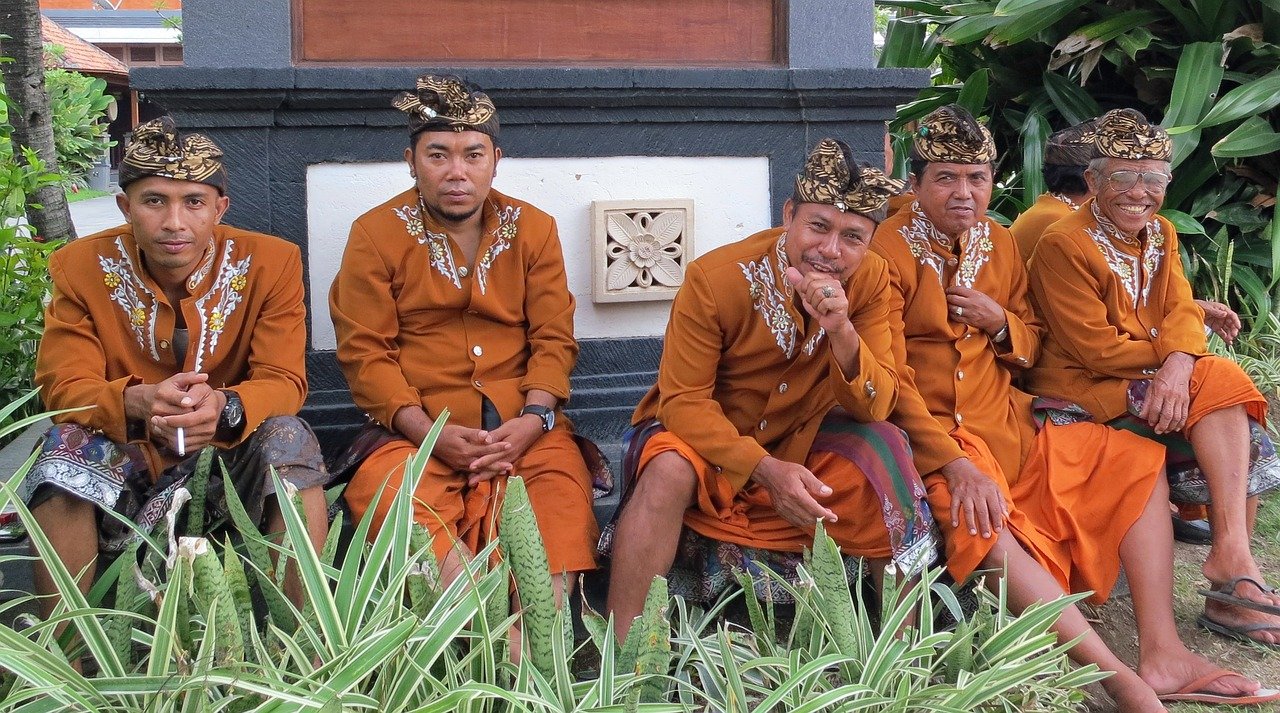The Balinese Calendar and how it guides everyday life in Bali
The Bali calendar for 2024 is key to understanding Bali culture and religion
Table of Contents Show
The Balinese calendar guides everyday life
At the heart of Balinese Religion, and indeed life, lies the Balinese calendar, a fascinating and intricate system that governs the timing of festivals, ceremonies, and daily activities.
In this comprehensive guide, we will embark on a captivating journey to unravel the mysteries of the Balinese calendar.
From the ancient origins to the unique structure, we will explore the depths of this calendar and discover its profound significance in Balinese culture.
Origins and significance of the Balinese calendar system
The Majapahit Influence
To understand the Balinese calendar, we must first trace its roots to the Majapahit Empire of Java. In the 14th century, Hindu Majapahit rulers sought refuge in Bali, bringing with them the Pawukon calendar. While the Pawukon system also had remnants in Java, it thrived and flourished in Bali, becoming a cornerstone of the island's cultural fabric. The Pawukon calendar's arrival marked a significant turning point for Balinese society, shaping religious ceremonies, market days, and personal anniversaries.
The Pawukon calendar
Unlike the familiar Western calendar, the Pawukon calendar operates on a unique cycle of 210 days. Rather than dividing time into months and weeks, the Pawukon calendar comprises ten distinct week systems. Each week system has a different number of days, ranging from one to ten, and runs concurrently. To add to its complexity, each day of each week has a unique name, resulting in a staggering total of 55 day names. While not all weeks hold equal importance, the Balinese primarily focus on the three-, five-, and seven-day weeks, which align with market days and hold significance in Hindu-Balinese theology.
The Saka Lunar Calendar
In addition to the Pawukon calendar, Bali also embraces the Saka lunar calendar. This lunar calendar, based on the cycles of the moon, intertwines with the Pawukon system to shape the timing of religious festivals and ceremonies. The Saka lunar calendar aligns with the Hindu-Balinese faith, ensuring that important religious observances unfold at auspicious times throughout the year.
Let’s take a closer look at each of these calendars, which together govern daily Balinese life.
The Pawukon Calendar: A Closer Look
The Week Systems
To navigate the Pawukon calendar, one must become familiar with its ten-week system. These systems, each named according to the number of days they encompass, provide the framework for tracking time in Bali.
The three-day week, known as Triwara, and the five-day week, called Pancawara, hold particular significance in Balinese culture.
The seven-day week, Saptawara, mirrors the familiar Western week but adopts different weekday names.
The Pawukon calendar's intricate web of weeks ensures that every day carries its own unique energy and symbolism.
Understanding the Day Names
With 55 day names in the Pawukon calendar, each calendar date can hold up to ten different weekday names, reflecting the simultaneous occurrence of multiple week systems.
The day names derive from Sanskrit and Balinese roots, infusing each day with its own distinct essence. For example, the three-day week's day names include Pasah, Beteng, and Kajeng, while the five-day week features Umanis, Paing, Pon, Wage, and Keliwon.
These evocative day names add depth and meaning to the Balinese calendar, shaping the choices and activities of the island's inhabitants.
The Pawukon Cycle and Tika
While the Pawukon calendar does not assign specific years or numbers to its cycles, it operates as an ongoing cycle of 210 days.
Tracking the Pawukon system requires the use of a Tika, a special calendar that highlights the most important weeks and days within the cycle. The Tika, often carved from wood or painted on cloth, presents a visual representation of the Pawukon cycle.
By aligning the Tika with a Western calendar, one can synchronize the two systems and determine the corresponding Pawukon week and day for any given Gregorian date.
The Balinese Paper Calendar
In everyday life, Balinese individuals often rely on the Balinese paper calendar to stay in sync with the Pawukon cycle and the Saka lunar calendar. This unique calendar features pages for each of the 12 months, similar to a Western (Gregorian) calendar, but also incorporates the Pawukon cycle and the Saka lunar dates.
The Balinese paper calendar provides a comprehensive view of the year, with weekday names listed in Indonesian, Balinese, English, Japanese, and Chinese.
By referencing this calendar, Balinese individuals can effortlessly navigate the intricate web of time and plan their activities in alignment with tradition and spirituality.
Below is the an image of the Balinese paper calendar for January 2024. You will see this all over Bali in homes, schools and businesses. Of course, it is in Balinese, so it’s hard for us guests to read!
The Balinese calendar shows the ceremonial requirements for each day of the month
The Saka Lunar Calendar: Cosmic Alignments
The Lunar Phases
The cycles of the moon as a guiding force in Balinese cosmology and religion
Deeply rooted in Hindu-Balinese spirituality, the Saka lunar calendar revolves around the cycles of the moon.
The lunar phases hold great significance, guiding the timing of religious festivals and ceremonies. From the new moon (Tilem) to the full moon (Purnama), each lunar phase carries its own symbolism and energy. Balinese communities come together during these auspicious lunar phases to honor their deities, seek blessings, and partake in elaborate rituals.
Nyepi: The Silent Day
A scary Ogoh Ogoh, made by each village’s youth group, will scare the real demons away ahead of Nyepi day. Image by Michelle Raponi from Pixabay
One of the most extraordinary celebrations guided by the Saka lunar calendar is Nyepi, also known as the Day of Silence. Falling on the day after the dark moon (Tilem), Nyepi marks the Balinese New Year.
The day before Nyepi, the island’s huaman-made demon effigies come out to scare away the real demons. The next day is Nyepi, when the island goes silent, so when those evil gods come back they think the island is deserted and move on elsewhere.
So, on Nyepi, the entire island (including tourism) comes to a complete standstill as silence and introspection envelop Bali. No lights, fires, or noise disturb the day's tranquility, allowing individuals to reflect, meditate, and cleanse their souls. Guests are asked to observe the day in their hotel or villa and the skeleton staff will look after you, feed you and just ask your respect in return. Nyepi showcases the profound spiritual devotion and respect for nature that permeate Balinese culture.
Galungan and Kuningan: Balinese Hinduism's Triumph
Galungan and Kuningan stand as two of the most significant religious festivals in Bali, dictated by the Saka lunar calendar. Galungan commemorates the triumph of Dharma (good) over Adharma (evil) and welcomes ancestral spirits back to Earth. Balinese communities adorn their homes with ornate penjors, prepare elaborate feasts, and engage in spirited ceremonies to honor their ancestors. Kuningan marks the end of the Galungan festivities, with offerings made to deities and blessings sought for a prosperous future.
The key dates for 2024 in the Balinese calendar
Using the Balinese paper calendar, we can identify the following key dates in the Balinese calendar for 2024:
The most significant dates that you are likely to hear mentioned as you travel in Bali are highlighted.
January 2024
03 January 2024 : Buda Wage Ukir
05 January 2024 : Hari Bhatara Sri
09 January 2024 : Hari Siwa Ratri, Kajeng Keliwon Uwudan, Anggar Kasih Kulantir
10 January 2024 : Tilem (New Moon)
15 January 2024 : Soma Umanis Tolu
24 January 2024 : Kajeng Keliwon Enyitan
24 January 2024 : Buda Keliwon Gumbreg
25 January 2024 : Purnama (Full Moon)
February 2024
03 February 2024 : Tumpek Uduh/Pengatag/Pengarah/Bubuh
05 February 2024 : Soma Paing Warigadean
07 February 2024 : Buda Wage Warigadean
08 February 2024 : Kajeng Keliwon Uwudan
09 February 2024 : Hari Bhatara Sri & Tilem (New Moon)
13 February 2024 : Anggar Kasih Julungwangi
22 February 2024 : Sugihan Jawa
23 February 2024 : Kajeng Keliwon Enyitan
23 February 2024 : Sugihan Bali
24 February 2024 : Purnama (Full Moon)
25 February 2024 : Hari Penyekeban
26 February 2024 : Penyajaan Galungan
27 February 2024 : Penampahan Galungan
28 February 2024 : Hari Raya Galungan
29 February 2024 : Manis Galungan
March 2024
02 March 2024 : Pemaridan Guru
03 March 2024 : Ulihan
04 March 2024 : Pemacekan Agung
06 March 2024 : Buda Paing Kuningan
08 March 2024 : Penampahan Kuningan
09 March 2024 : Kajeng Keliwon Uwudan & Hari Raya Kuningan
10 March 2024 : Tilem (New Moon)
11 March 2024 : Hari Raya Nyepi (Silent Day)
13 March 2024 : Buda Wage Langkir
15 March 2024 : Hari Bhatara Sri
19 March 2024 : Anggar Kasih Medangsia
24 March 2024 : Purnama (Full Moon)
April 2024
03 April 2024 : Buda Keliwon Pegatuwakan
08 April 2024 : Tilem (New Moon)
13 April 2024 : Tumpek Krulut
17 April 2024 : Buda Wage Merakih
19 April 2024 : Hari Bhatara Sri
23 April 2024 : Anggar Kasih Tambir & Purnama (Full Moon)
30 April 2024 : Anggara Paing Medangkungan
May 2024
08 May 2024 : Tilem (New Moon) & Buda Keliwon Matal
18 May 2024 : Tumpek Kandang
22 May 2024 : Buda Wage Menail & Purnama (Full Moon)
23 May 2024 : Kajeng Keliwon Uwudan
24 May 2024 : Hari Bhatara Sri
June 2024
06 June 2024 : Tilem (New Moon)
12 June 2024 : Buda Keliwon Ugu
21 June 2024 : Purnama (Full Moon)
22 June 2024 : Kajeng Keliwon Uwudan & Tumpek Wayang
26 June 2024 : Buda Wage Kulawu
28 June 2024 : Hari Bhatara Sri
July 2024
02 July 2024 : Anggar Kasih Dukut
06 July 2024 : Tilem (New Moon)
07 July 2024 : Kajeng Keliwon Pamelastali/Watugunung Runtuh
09 July 2024: Paid-Paidan
10 July 2024 : Hari Urip
11 July 2024 : Hari Patetegan
12 July 2024 : Hari Pangredanaan
13 July 2024 : Hari Raya Saraswati
14 July 2024 : Banyu Pinaruh
15 July 2024 : Soma Ribek
16 July 2024 : Sabuh Mas
17 July 2024 : Pagerwesi
20 July 2024 : Purnama (Full Moon)
22 July 2024 : Kajeng Keliwon Uwudan
27 July 2024 : Tumpek Landep
28 July 2024 : Redite Umanis Ukir
31 July 2024 : Buda Wage Ukir
August 2024
02 August 2024 : Hari Bhatara Sri
04 August 2024 : Tilem (New Moon)
06 August 2024 : Anggar Kasih Kulantir
12 August 2024 : Soma Umanis Tolu
19 August 2024 : Purnama (Full Moon)
21 August 2024 : Kajeng Keliwon Uwudan
21 August 2024 : Buda Keliwon Gumbreg
31 August 2024 : Tumpek Uduh/Pengatag/Pengarah/Bubuh
September 2024
02 September 2024 : Soma Paing Warigadean
03 September 2024 : Tilem (New Moon)
04 September 2024 : Buda Wage Warigadean
06 September2024 : Hari Bhatara Sri
10 September 2024 : Anggar Kasih Julungwangi
17 September 2024 : Purnama (Full Moon)
19 September 2024 : Sugihan Jawa
20 September 2024 : Kajeng Keliwon Uwudan
20 September 2024 : Sugihan Bali
22 September 2024 : Hari Penyekeban
23 September 2024 : Penyajaan Galungan
24 September 2024 : Penampahan Galungan
25 September 2024 : Hari Raya Galungan
26 September 2024 : Manis Galungan
28 September 2024 : Pemaridan Guru
29 September 2024 : Ulihan
30 September 2024 : Pemacekan Agung
October 2024
02 October 2024 : Buda Paing Kuningan
02 October 2024 : Tilem (New Moon)
04 October 2024 : Penampahan Kuningan
05 October 2024 : Hari Raya Kuningan
09 October 2024 : Buda Wage Langkir
11 October 2024 : Hari Bhatara Sri
15 October 2024 : Anggar Kasih Medangsia
17 October 2024 : Purnama (Full Moon)
20 October 2024 : Kajeng Keliwon Uwudan
30 October 2024 : Buda Keliwon Pegatuwakan
November 2024
01 November 2024 : Tilem (New Moon)
09 November 2024 : Tumpek Krulut
13 November 2024 : Buda Wage Merakih
15 November 2024 : Hari Bhatara Sri
16 November 2024 : Purnama (Full Moon)
19 November 2024 : Anggar Kasih Tambir
19 November 2024 : Kajeng Keliwon Uwudan
26 November 2024 : Anggara Paing Medangkungan
30 November 2024 : Tilem (New Moon)
December 2024
04 December 2024 : Buda Keliwon Matal
14 December 2024 : Tumpek Kandang
15 December 2024 : Purnama (Full Moon)
18 December 2024 : Buda Wage Menail
19 December 2024 : Kajeng Keliwon Uwudan
20 December 2024 : Hari Bhatara Sri
30 December 2024 : Tilem (New Moon)
Conclusion: A Tapestry of Time
As our journey through the Balinese calendar draws to a close, we emerge with a newfound appreciation for the intricate tapestry of time that guides Balinese life. From the Pawukon calendar's complex cycle to the cosmic alignments of the Saka lunar calendar, every day in Bali is imbued with meaning and purpose. The Balinese calendar serves as a compass, guiding the island's inhabitants through a harmonious blend of tradition, spirituality, and community. As visitors to this enchanting land, let us embrace the wisdom and beauty of the Balinese calendar, and may it inspire us to cherish the passage of time and celebrate life's profound moments.
Fascinated? You might also like to read about: The Fascinating Caste and Clan System in Balinese Religion and Household Shrines: Exploring the Spiritual World of Balinese Homes
Frequently asked questions about the Balinese calendar
What is the Balinese calendar?
The Balinese calendar is a complex system of timekeeping that is based on a combination of lunar and solar cycles. It is used to determine auspicious days for religious ceremonies, festivals, and other important events.
How does the Balinese calendar differ from the Gregorian calendar?
The Balinese calendar differs from the Gregorian calendar in several ways. It is based on a different system of timekeeping, and it has its own unique names for days, weeks, and months. Additionally, it is used primarily for religious and cultural purposes, rather than for practical or administrative purposes.
What is the significance of the Balinese calendar in Balinese religion?
The Balinese calendar is an important part of Balinese religion, as it is used to determine auspicious days for religious ceremonies, festivals, and other important events. It reflects the Balinese belief in the importance of maintaining spiritual balance and harmony through the observance of traditional practices and rituals.
How does the Balinese calendar reflect the Balinese philosophy of Tri Hita Karana?
The Balinese calendar reflects the Balinese philosophy of Tri Hita Karana by emphasizing the importance of maintaining balance and harmony between humans, nature, and the divine. It is used to determine auspicious days for religious ceremonies and festivals that honor the deities and spirits and promote spiritual well-being.
What are some of the unique features of the Balinese calendar?
Some of the unique features of the Balinese calendar include its use of lunar and solar cycles, its ten distinct week cycles, and its unique names for days, weeks, and months. It is also based on a complex system of calculations and observations that have been passed down through generations.
How is the Balinese calendar used to determine auspicious days for religious ceremonies and festivals?
The Balinese calendar is used to determine auspicious days for religious ceremonies and festivals by consulting with a Balinese priest or astrologer. They will use a combination of calculations and observations to determine the most auspicious days for the event.
How does the Balinese calendar reflect the cyclical nature of time in Balinese religion?
The Balinese calendar reflects the cyclical nature of time in Balinese religion through its recurring patterns and cycles. It recognizes the repetitive nature of celestial movements and the importance of honoring specific days and periods within these cycles. This understanding of cyclical time is deeply ingrained in Balinese religious practices and rituals.
Are there any specific rituals or ceremonies associated with the transition of Balinese calendar cycles?
Yes, there are specific rituals and ceremonies associated with the transition of Balinese calendar cycles. For example, the Nyepi or "Day of Silence" marks the beginning of the Balinese New Year and is a time of introspection and purification. Other ceremonies and rituals may also be performed to honor the transition of calendar cycles and seek blessings for the upcoming period.
How does the Balinese calendar influence everyday life and activities in Bali?
The Balinese calendar influences everyday life and activities in Bali by guiding the timing of various events and activities. It determines auspicious days for important life events such as weddings, house blessings, and temple ceremonies. It also influences agricultural practices, traditional arts performances, and community gatherings, ensuring that they align with the spiritual and cultural significance of specific calendar days.
How does the Balinese calendar contribute to the preservation of Balinese cultural identity?
The Balinese calendar contributes to the preservation of Balinese cultural identity by providing a framework for religious and cultural practices. It ensures that important ceremonies, festivals, and rituals are observed at the appropriate times, maintaining the rich tapestry of Balinese traditions. The calendar serves as a reminder of the deep-rooted spiritual beliefs and cultural heritage that are integral to Balinese society.























Bali's remarkable rice terraces draw numerous tourists. However, could tourism pose a threat that the age-old Subak system might struggle to overcome?